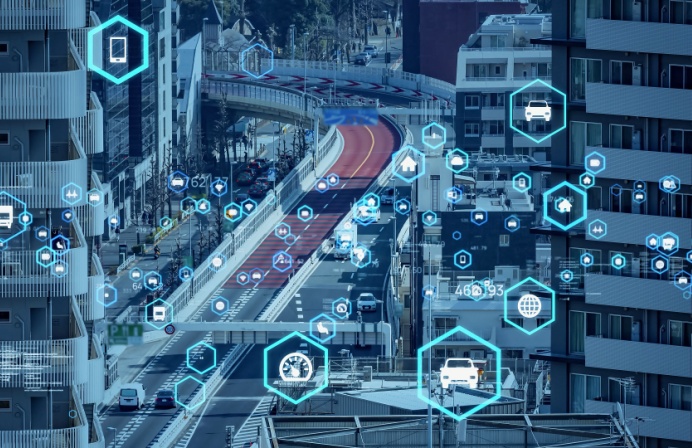
If government agencies can “break down silos” and create “customer-centric” digital services, they will benefit from “huge savings” and enable better customer experiences, argues Jonas Peterson, chief digital officer for the WA office of digital government.
Presenting the opening keynote of the 2020 FST Government Western Australia eConference, Peterson expounded on the development of WA’s draft digital transformation strategy – a roadmap aimed at delivering improved citizen services, fostering digital inclusion, bolstering cybersecurity standards, and enabling better use of data to inform government-wide decision-making.
The strategy forms part of the WA Government’s promise to invest almost $35 million into digital transformation across the state’s public sector, which was announced in April last year.
Peterson is hoping the strategy will build a more comprehensive “shared understanding” of the Government’s digital objectives, eventually enabling everyone – employees and constituents alike – to “reap the benefits” of digital transformation.
This thinking also reflects the vision statement of the Federal Government’s Digital Transformation Agency, which expressed the hope of positioning Australia as “one of the top three digital governments in the world” by 2025.
A digital transformation strategy needs to follow the same principles that would be adopted in the private sector, Peterson feels. And, while this needs to encompass practical uses of technology, it should also outline how agencies will leverage these technologies to suit their unique needs; this ensures that, where there is an overlap in priorities, agencies can take advantage of common technology infrastructure.
“Digital transformation is the same as business transformation… [it] can provide huge savings to government because you can start using the same digital infrastructure across agencies.”
Peterson emphasised that an increased reliance on digital, or online, citizen services would significantly reduce the need to engage with constituents in person, thereby reducing the cost of maintaining front-line staff.
It is crucial, however, that agencies balance the provision of improved digital services with the need to create a “safe and secure” online environment for citizens, he said.
To do so, he urges agencies to implement higher cybersecurity standards and establish a transparent approach when using personal citizen data.
The end goal for the state’s digital transformation strategy, he said, will be on “delivering convenient, smart, and secure services” for Western Australians.
A ‘whole-of-government’ approach
If agencies can begin to leverage “whole-of-government digital infrastructure”, they can access tremendous savings and simultaneously provide citizens with enhanced customer service experiences, Peterson stressed.
Some IT solutions currently in use within government may serve individual agency needs but “fail to serve the whole of government” as a lack of integration offers a low-quality customer experience, he said.
“We have fairly high levels of local flexibility but low levels of integration across the government, which means we also have low levels of global standardisation across organisations and low levels of customer focus.”
Peterson wants governments to move from a “siloed situation” to a framework where they have “freedom within boundaries”, believing this will enable agencies to operate with increased agility and allow them to quickly spin out new digital capabilities as needed.
Agreed standards of integration would allow for greater levels of customer focus. An integrated technology plan would facilitate more integrated customer touchpoints, Peterson said. This means customers could, ideally, deal “with all agencies” simultaneously and experience more seamless interactions with digital government.
When it comes to improving customer services, Peterson believes WA has much to learn from governments abroad, as well as “other jurisdictions” within Australia.
He believes that exemplary digital governments focus on providing specialised, but wholly integrated “customer-centric portals”, where individuals or businesses can access services “no matter which agency” those services are tied to.
A key aspect in establishing seamless online digital services, however, is the creation of a digital identity, which could also be expanded to enable the use of safe and secure payment systems for citizens – though this idea was not expanded upon.
Once core digital infrastructure is in place to support this integrated agency framework, Peterson believes the Western Australian Government can support citizens throughout “key life events” – from registering a birth, to registering a car, to purchasing a home. This can be achieved if the agencies that manage these separate functions collaborate fully, rather than requiring citizens to do deal with multiple departments.
Peterson allows that the Government has made progress in some areas, for instance, the WA.gov.au search portal, which consolidates information from different government agencies. However, he acknowledges that the Government still has “an opportunity to do more”, for instance, giving citizens the ability to access more services digitally.
Significantly, the digital transformation strategy also needs to ensure that digitally excluded individuals are not left behind, so everyone can experience “the benefits of digital transformation.”
Providing the necessary means for change
To enable Peterson’s vision of a government with seamless and integrated digital services, public agencies need to work collaboratively, utilising data and analytics capabilities that are already available to them.
The Western Australian Government has in place “world-class data and analytics capabilities and data linkage capabilities”, he said – but it needs to learn to consolidate data between agencies.
There are, no doubt, organisational and technological roadblocks that can inhibit data sharing between agencies.
To this end, Peterson flagged the creation of a pilot program to enable and support government departments in setting up “technical infrastructure” to facilitate inter-agency data sharing.
Peterson also outlined the importance of observing the private sector to determine whether some of their processes, technologies, or organisational structures could be implemented in government, such as centralising “core analytic capability, data capability”, and “AI capabilities”.
Over the next few years, the Government is expected to start building out the analytics capability of their systems to facilitate the sharing of data and insights. Currently, different agencies have separate data stores. However, this strategy would endeavour to connect these siloed stores to centralised data hubs, making them accessible by all relevant agencies.
In Peterson’s view, however, this requires agencies to work on their internal organisational transformation in order to “leverage that infrastructure” sufficiently to suit their needs.
Throughout the process of digital transformation, government agencies are likely to “meet resistance” and experience “rigidity”, Peterson said. To combat this, strong governance is required “to manage the journey”, including support for decision making, the provision of funding, and proper project management.
Transformation strategies, he said, need to support whole-of-government collaboration, rather than just individual agencies.
Digital transformation in action
Peterson noted Denmark’s digital government services offering as an exemplar of eGovernment.
The Nordic nation was among the pioneers in the digitisation and consolidation of government services, rolling out a consolidated digital ID for citizens in 2007.
The country also recently ranked first globally in the UN’s eGovernment rankings.
Peterson praised the proactive and personalised approach embraced by the Danish Government – an approach ultimately built upon the bedrock of a single, consolidated login for citizens, giving individuals access to integrated government services.
Moreover, information provided by the Government to its citizenry can be personalised to address specific life events tied to an individual’s life experiences. Upon accessing this “life event” data, which is logged within the Government’s one-stop-shop online portal, individuals can be provided with information and services relating to that event. For instance, for those “leaving the country”, this might include services like pausing welfare benefits or forwarding mail.
This personalised citizen service is made possible by integrated digital infrastructure, such as the whole-of-government citizen portal and digital identity, which all government agencies in Denmark are connected to, Peterson said.
This integrated system, in his view, allows governments to benefit from “huge savings” and “much better customer experiences”.
To create and implement a similar system, Peterson said, WA would require “strong collaboration across agencies”, “strong governments”, and a “shared understanding of where we are going”.
Peterson believes digital transformation will need to be an ongoing process, but is hopeful that when WA’s digital strategy is complete, the government can “position WA’s public sector for digital transformation” allowing everyone to “reap the benefits”.





